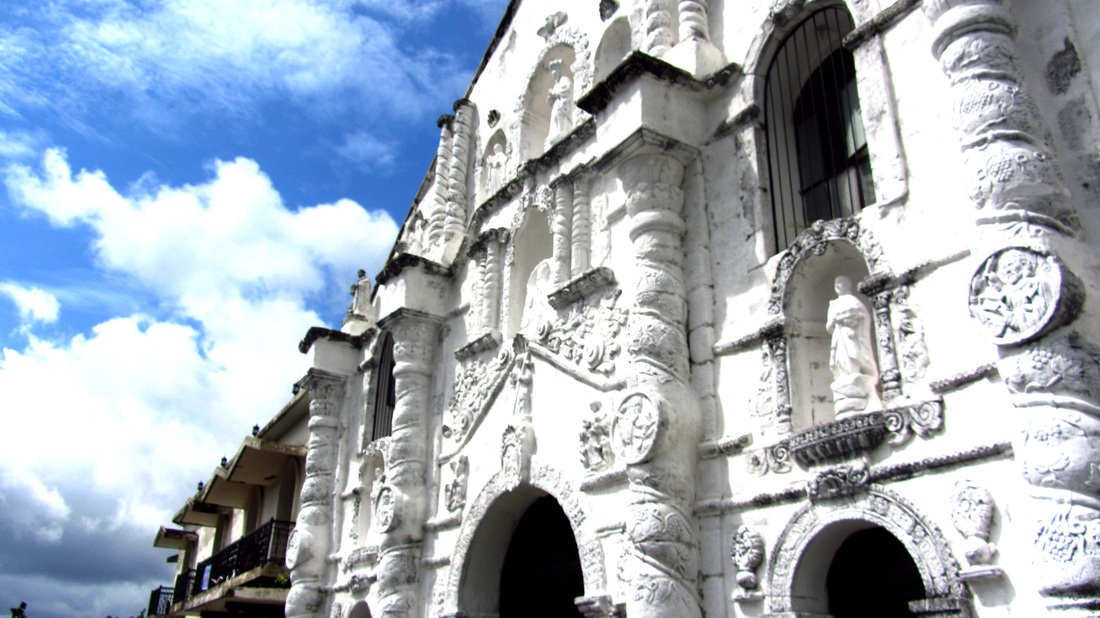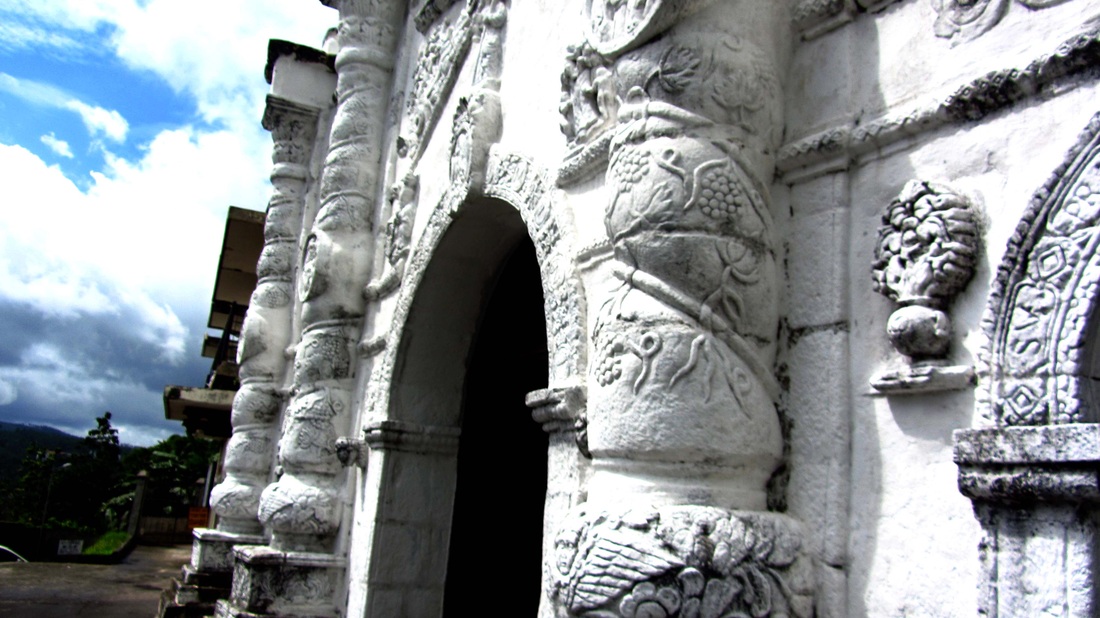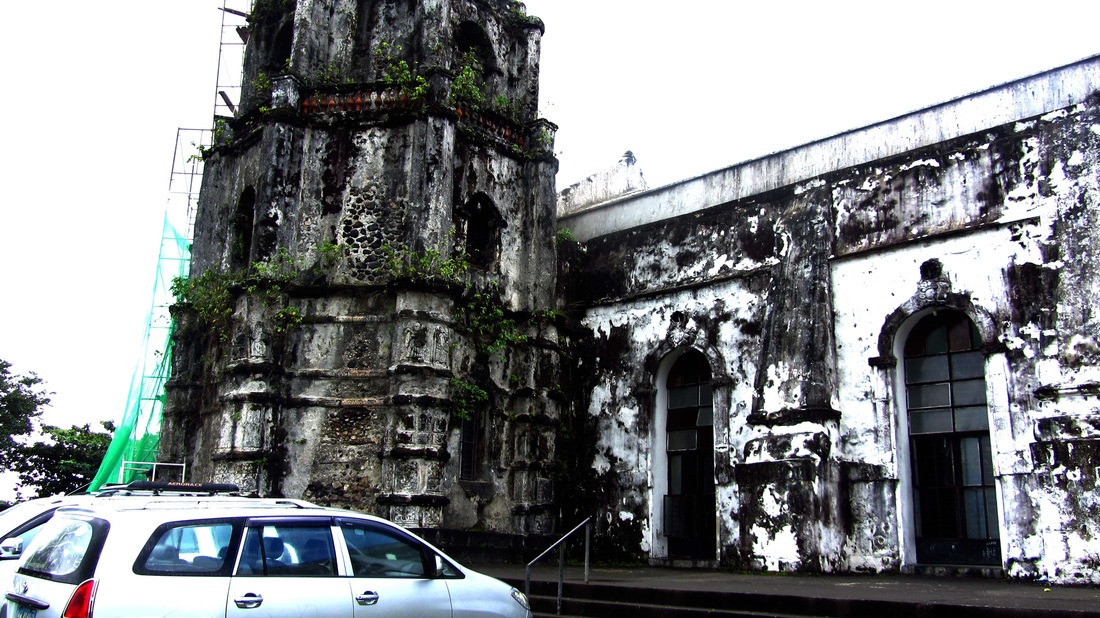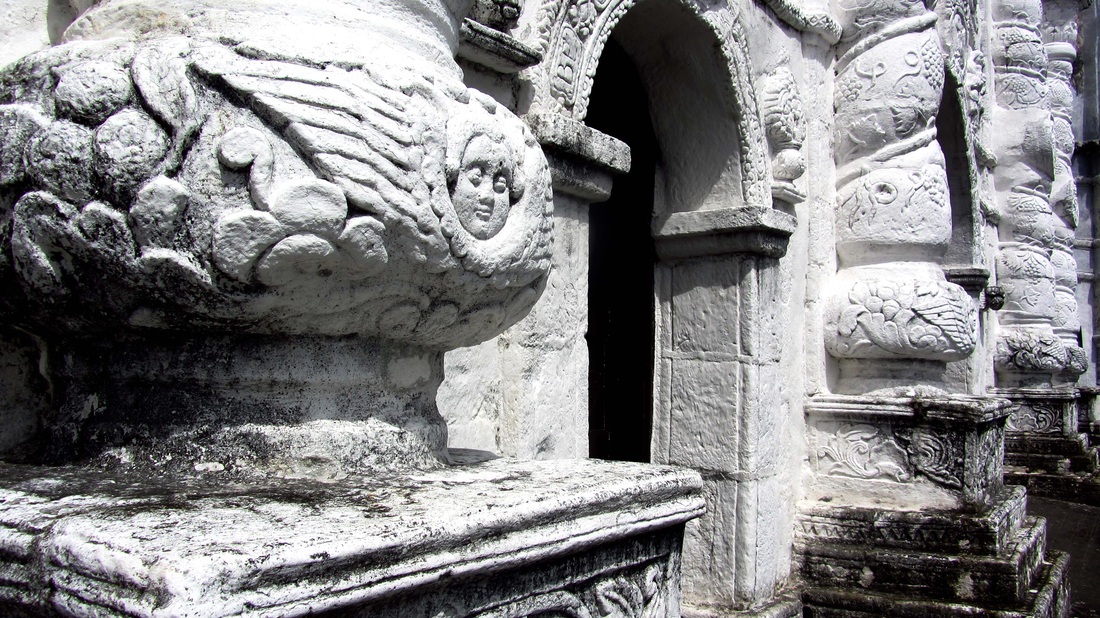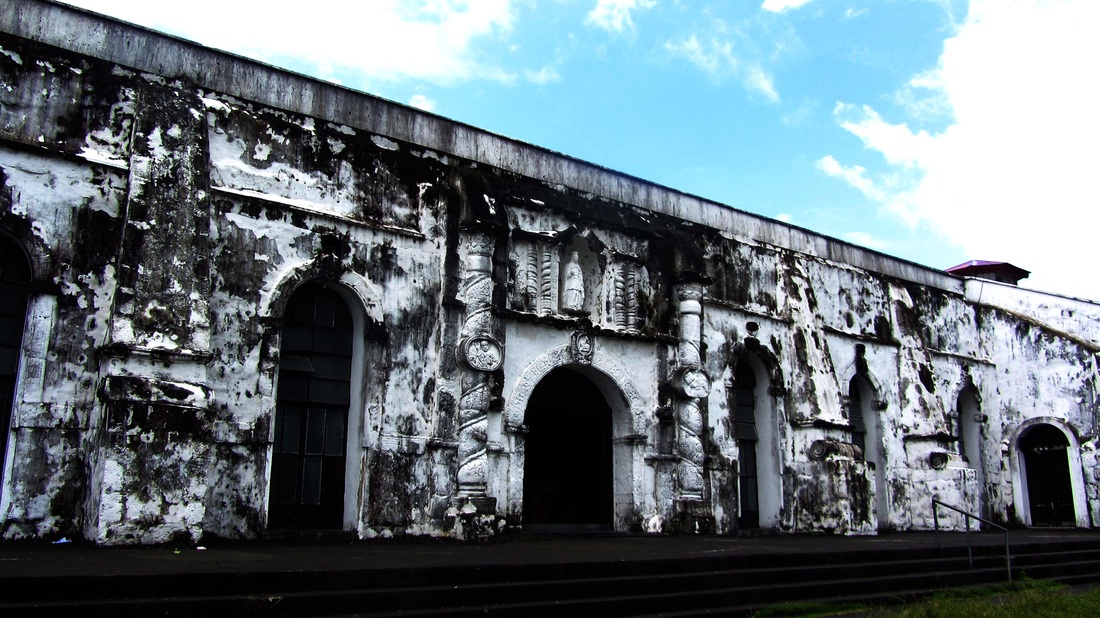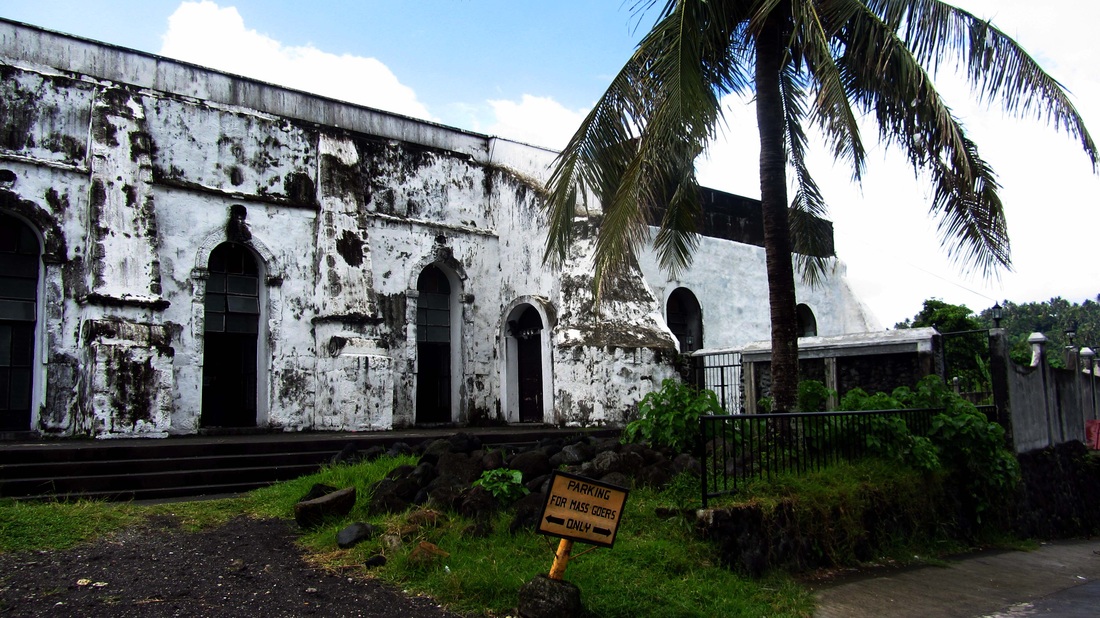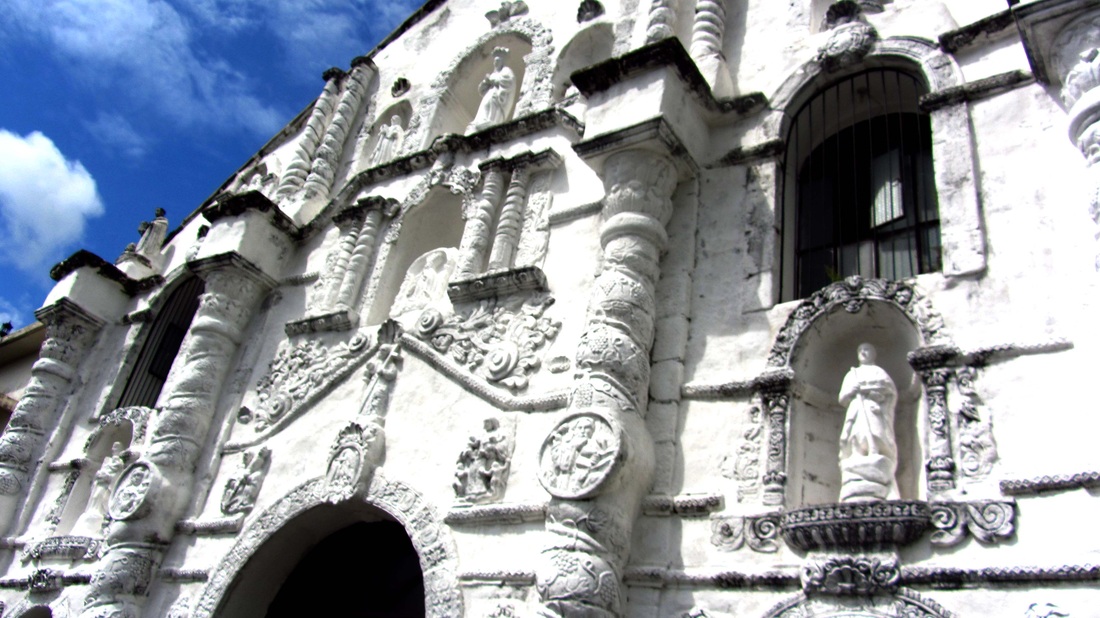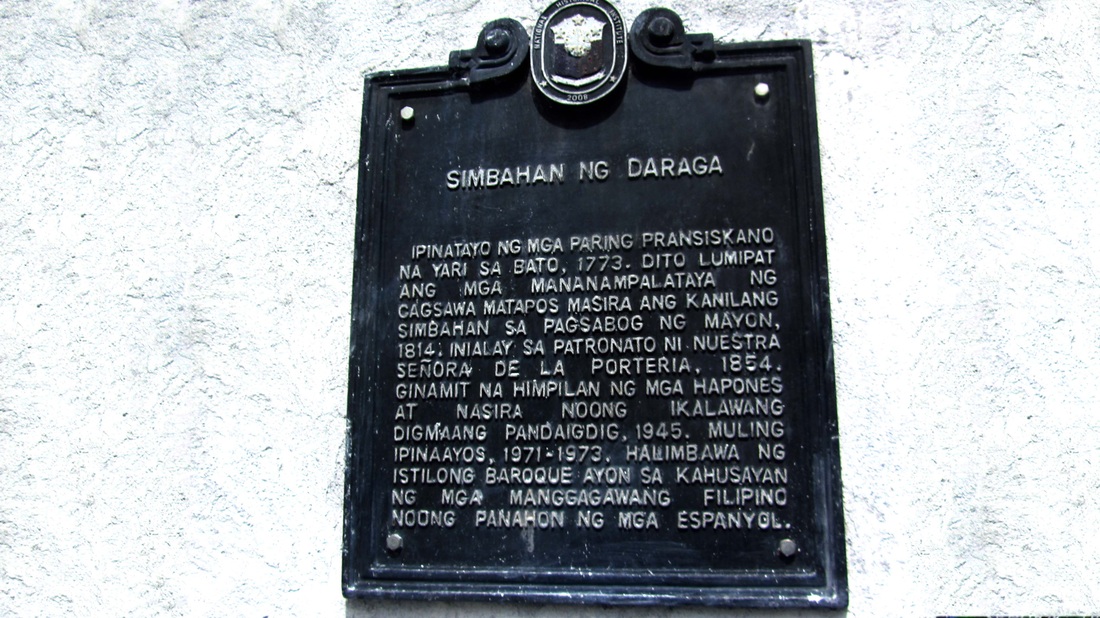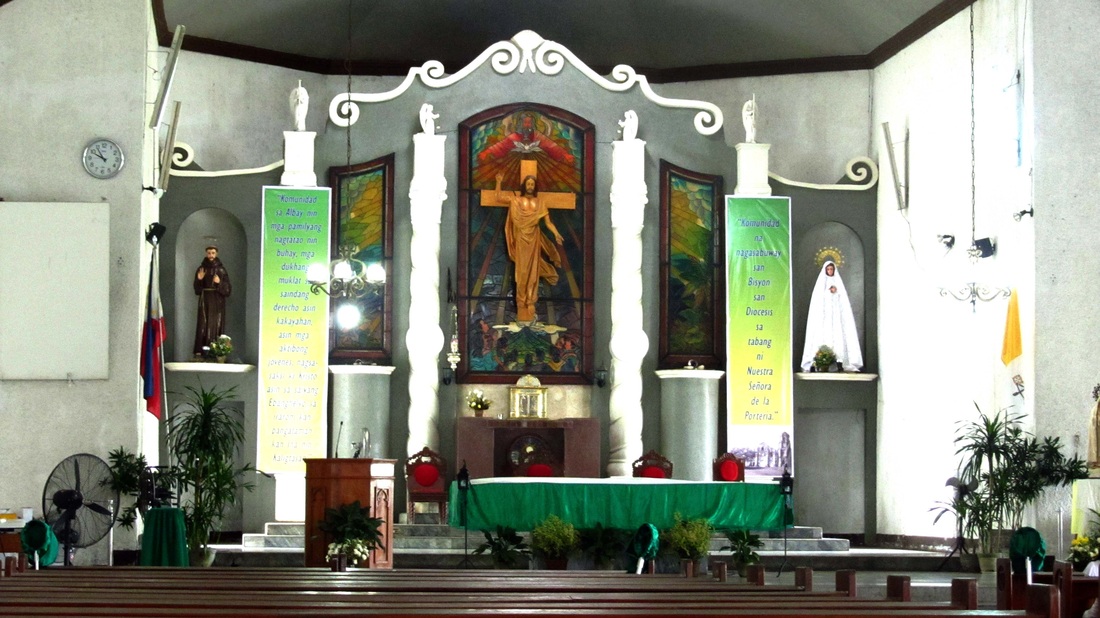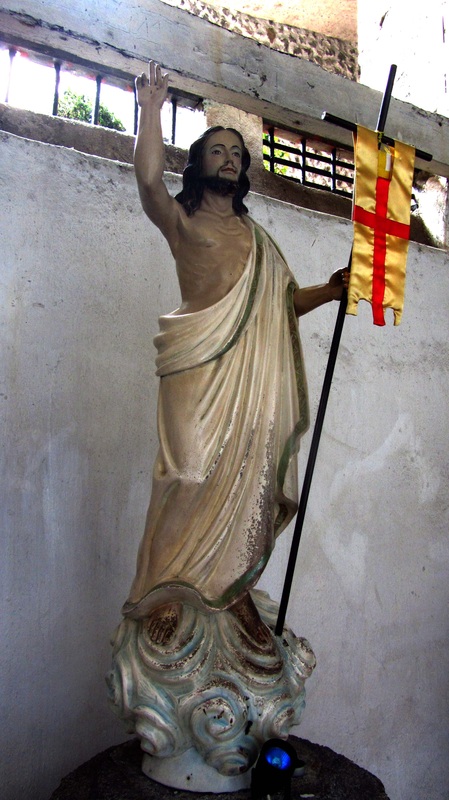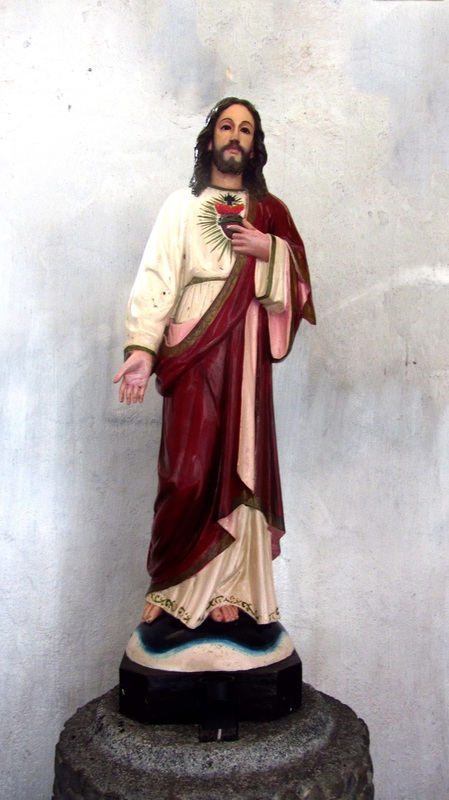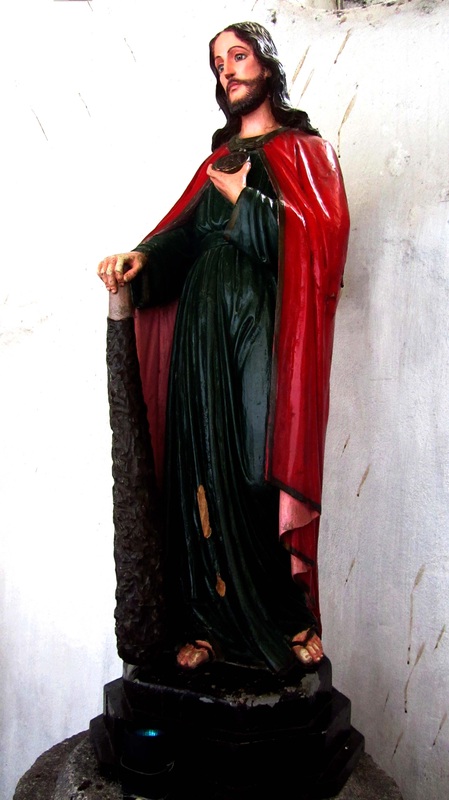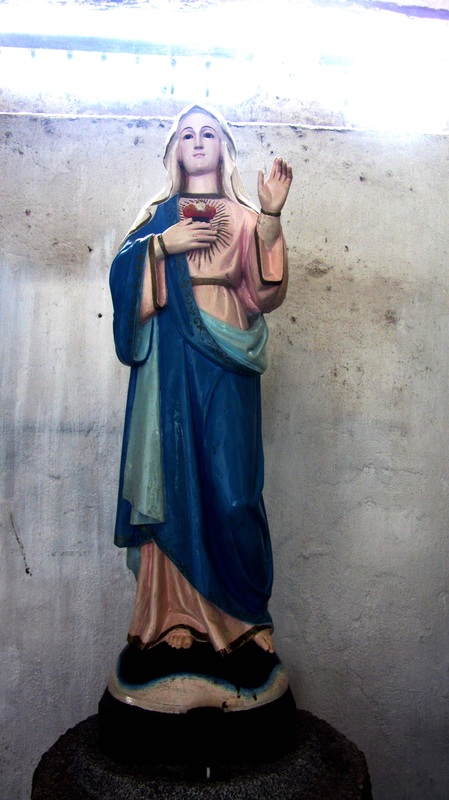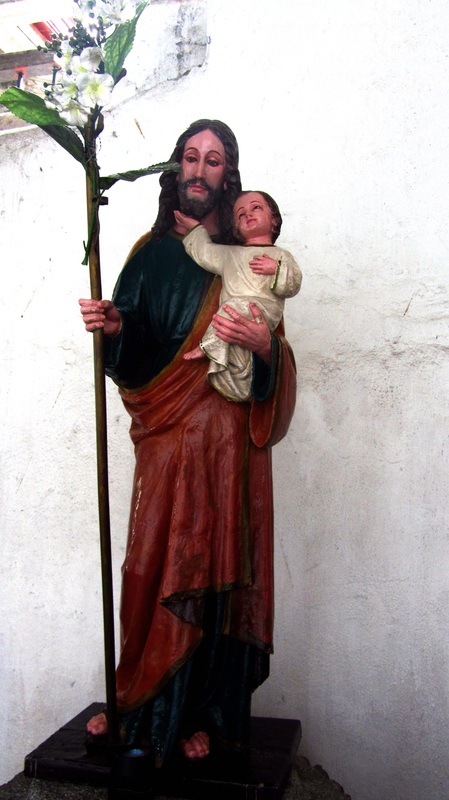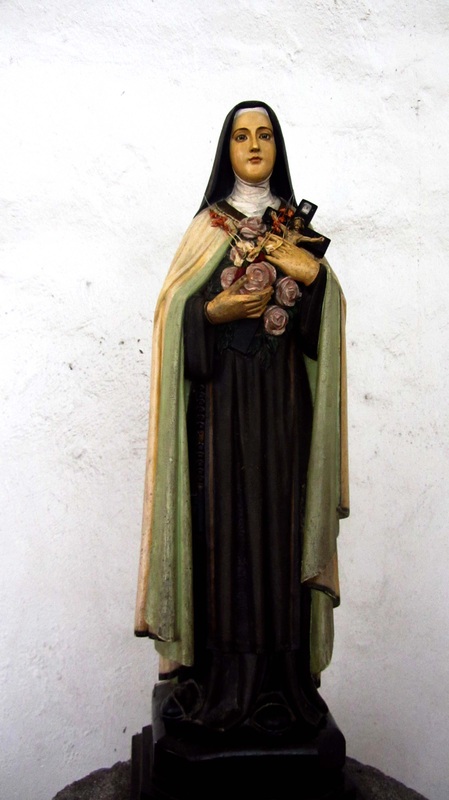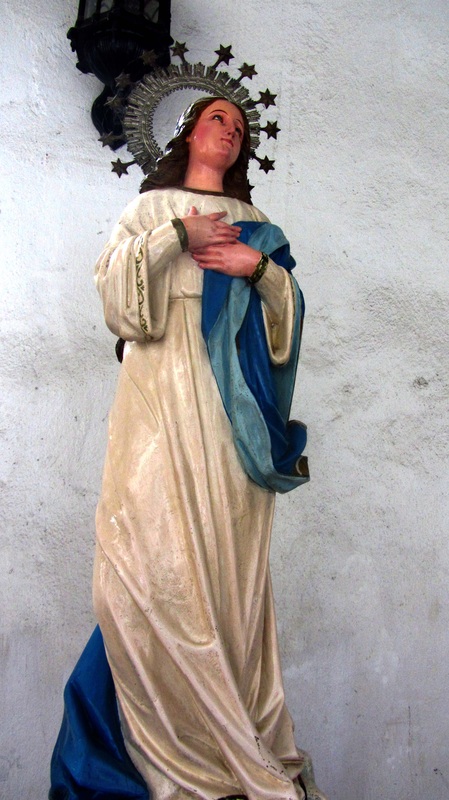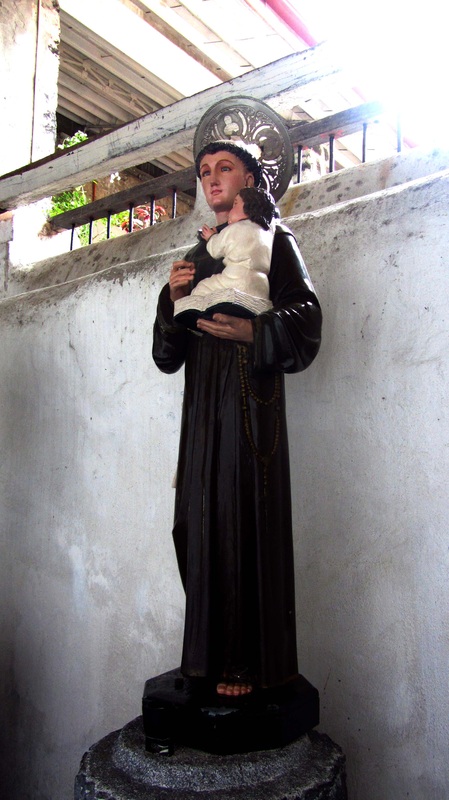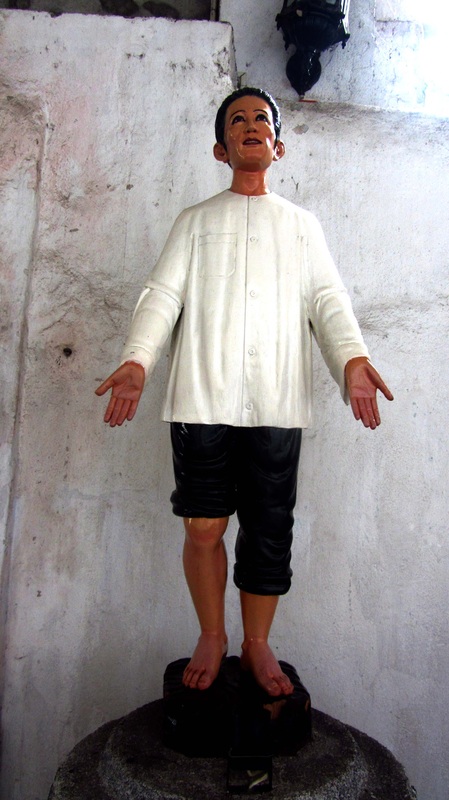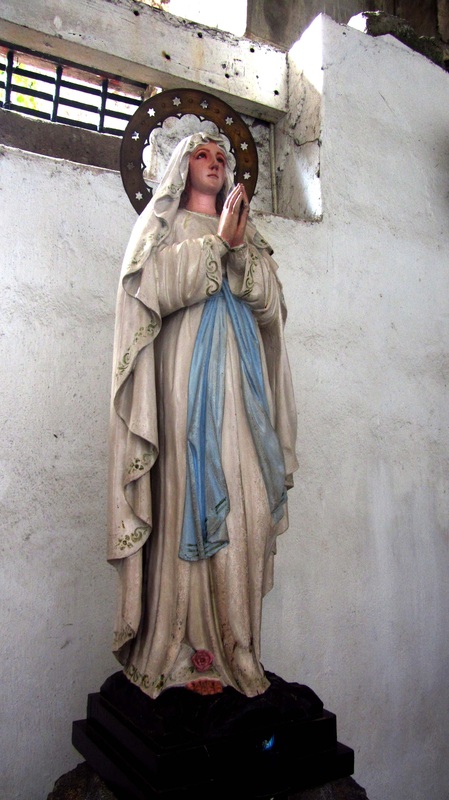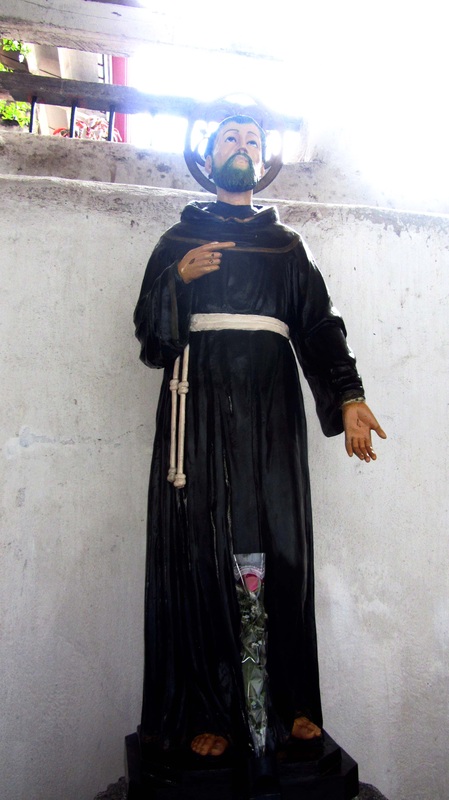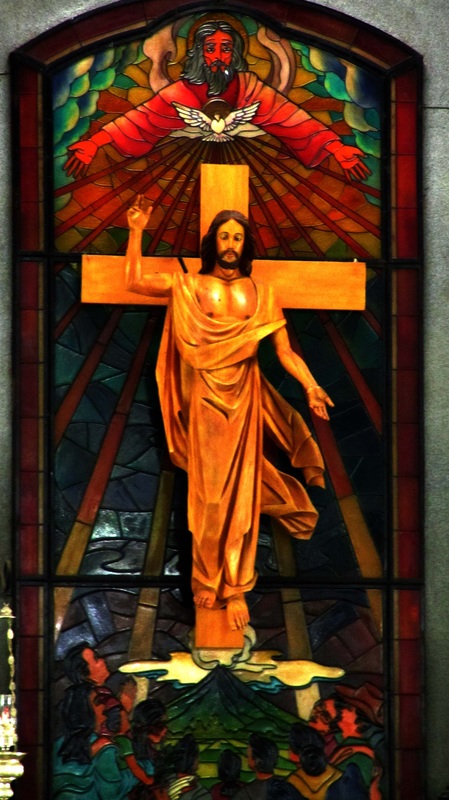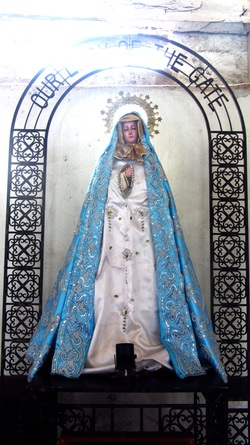
The Daraga Church was built by Franciscan missionaries in 1773 when the present town of Daraga was but a barrio of the older town of Cagsawa. The catastrophic eruption of Mayon Volcano on February 1, 1814 destroyed Cagsawa, Budiao and three other towns and killed almost 2,000 people. Today, only the belfry of the old Cagsawa church remains as a mute testimony to Mayon’s treacherous wrath. The survivors of the 1814 eruption chose to relocate to Daraga. This was then approved by the Governor-General on October 4, 1814 and implemented on November 7,1814.
The 17th-century church built on top of Santa Maria Hill overlooks the slopes of Mount Mayon. According to architects of the National Museum, its facade had to undergo restoration because of its badly deteriorating state brought about by age.
People visiting the church have been wondering why the façade was painted white, obliterating the Old World look that had long been admired.
Angel Bautista, chief of the cultural properties division of the National Museum, said lime coating containing chemical ingredients turned it white while restoring and protecting the structural image.
Bautista said the Nuestra Señora de la Porteria, which was built 238 years ago, had been exposed to the sun and rain, which eroded the façades architectural design.
The 17th-century church built on top of Santa Maria Hill overlooks the slopes of Mount Mayon. According to architects of the National Museum, its facade had to undergo restoration because of its badly deteriorating state brought about by age.
People visiting the church have been wondering why the façade was painted white, obliterating the Old World look that had long been admired.
Angel Bautista, chief of the cultural properties division of the National Museum, said lime coating containing chemical ingredients turned it white while restoring and protecting the structural image.
Bautista said the Nuestra Señora de la Porteria, which was built 238 years ago, had been exposed to the sun and rain, which eroded the façades architectural design.
The design of the Daraga Church can be described as a blend of architectural styles: Renaissance Gothic and Mexican baroque. The result: an indigenous baroque style that distinguishes it from other colonial churches in the Philippines. The facade was carefully carved from volcanic stones. Distinct features of the Daraga Church facade include the four spiral columns with medallions at the center of each column bearing images of the four Evangelists.
The richly decorated facade also features images of the Our Lady of the Gate, the Franciscan Saints, the coat of arms of the Franciscan order and many more. The belfry has an octagonal base with images of the twelve Apostles engraved on the sides of the six angles. All of these were hewn from volcanic stone.
Hand in hand with the architectural beauty goes such as wealth of symbolism characteristic of the late Baroque style that can be overlooked easily by the common observer.
The most outstanding, course, are the four round medallions in the middle of the columns with the images of the four evangelists (Matthew, John, Luke and Mark) carved out of volcanic stones. Engraved on the base of the columns are the Popes tiara with the keys, the five wounds or stigmata of St. Francis, the coat of arms of the Franciscan order and the royal crown. Entwining round the columns is cluster of grapes, symbols of the Eucharist.
Round the arches of the three doors there is engraved an inscription in Latin that reads: Bene fundata est domus Domini supra firmam petram (Well founded is the house of the Lord on firm rock).
On top of the arch of the main door the symbols of the three theological virtues can be seen, carved out of the stone: a lady with an anchor for hope, a blind-folded lady for faith, and another with several children for charity. At the foot of the symbol of faith, as it were the keystone of the arch, there is a pelican breast-feeding her chickssymbol of the Eucharist also.
Right on top of the two smaller doors, there are enthroned in a niche the statues of St. Joseph and St. John the Baptist.
At the very center of the façade, flanked by six small salomonica columns there is prominently enshrined in a niche the medallion of our Lady of the Gate. On its top, there is a large size statue of the Immaculate Conception flanked by six statues of Franciscan Saints: Paschal Bailon, Clare, Anthony of Padua, Francis of Asisi and Peter of Alcantara. One statue cannot be identified since it has been lost with the passage of time.
The belfry by the façade is built in octagonal form because that is the traditional shape of the baptistery that lies at its base. Outside engraved on the sides of the six angles, one can see the images of the twelve apostles starting with Peter and Paul, James and John and followed by all others, each one holding the instrument of his respective martyrdom.
The side facing the Mt. Mayon was built muck like the façade. One can find salomonica columns with the medallions of St. Peter and St.Paul, the slain Lamb holding a victory bannera symbol of the central mystery of our salvation: Christs death and resurrection. The top of the arch has an inscription in Latin that reads Ecce Agnus Dei (Behold the Lamb of the God), and as the main feature, the statue of Mary the Queen is enshrined in a niche.
Inside the church, at the end of the presbiterio, near the cross section there stand two columns similar to those in the façade, the only thing that were found worth preserving in the interior. One can see on them the medallions of two Franciscans, St. Bonaventure and probably, St. Louis IX, King of France.
Source: http://daragaparish.tripod.com/id4.html
The most outstanding, course, are the four round medallions in the middle of the columns with the images of the four evangelists (Matthew, John, Luke and Mark) carved out of volcanic stones. Engraved on the base of the columns are the Popes tiara with the keys, the five wounds or stigmata of St. Francis, the coat of arms of the Franciscan order and the royal crown. Entwining round the columns is cluster of grapes, symbols of the Eucharist.
Round the arches of the three doors there is engraved an inscription in Latin that reads: Bene fundata est domus Domini supra firmam petram (Well founded is the house of the Lord on firm rock).
On top of the arch of the main door the symbols of the three theological virtues can be seen, carved out of the stone: a lady with an anchor for hope, a blind-folded lady for faith, and another with several children for charity. At the foot of the symbol of faith, as it were the keystone of the arch, there is a pelican breast-feeding her chickssymbol of the Eucharist also.
Right on top of the two smaller doors, there are enthroned in a niche the statues of St. Joseph and St. John the Baptist.
At the very center of the façade, flanked by six small salomonica columns there is prominently enshrined in a niche the medallion of our Lady of the Gate. On its top, there is a large size statue of the Immaculate Conception flanked by six statues of Franciscan Saints: Paschal Bailon, Clare, Anthony of Padua, Francis of Asisi and Peter of Alcantara. One statue cannot be identified since it has been lost with the passage of time.
The belfry by the façade is built in octagonal form because that is the traditional shape of the baptistery that lies at its base. Outside engraved on the sides of the six angles, one can see the images of the twelve apostles starting with Peter and Paul, James and John and followed by all others, each one holding the instrument of his respective martyrdom.
The side facing the Mt. Mayon was built muck like the façade. One can find salomonica columns with the medallions of St. Peter and St.Paul, the slain Lamb holding a victory bannera symbol of the central mystery of our salvation: Christs death and resurrection. The top of the arch has an inscription in Latin that reads Ecce Agnus Dei (Behold the Lamb of the God), and as the main feature, the statue of Mary the Queen is enshrined in a niche.
Inside the church, at the end of the presbiterio, near the cross section there stand two columns similar to those in the façade, the only thing that were found worth preserving in the interior. One can see on them the medallions of two Franciscans, St. Bonaventure and probably, St. Louis IX, King of France.
Source: http://daragaparish.tripod.com/id4.html

